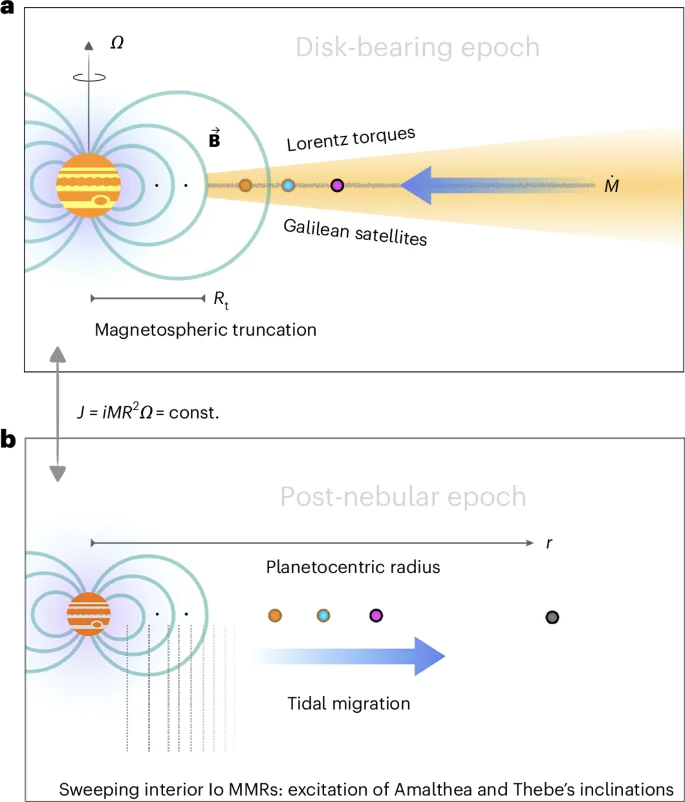
Jupiter’s Surprising Youth: Giant Planet Was Once Twice its Size, New Study Reveals
Jupiter, the solar system's largest planet and often dubbed its 'architect,' was once a far grander entity than we observe today. A groundbreaking new study reveals that in its early years, Jupiter was twice its current size and possessed a magnetic field 50 times stronger. This revelation offers significant insights into the formation of our solar system and the evolution of this gas giant.

Published in Nature Astronomy, the research led by Konstantin Batygin of Caltech and Fred C. Adams of the University of Michigan sheds light on Jupiter's primordial state. Their calculations indicate that approximately 3.8 million years after the solar system's first solids formed, Jupiter was significantly larger and more magnetized. This period coincided with the dissipation of the protoplanetary nebula, the disk of gas and dust surrounding the young sun.
"Our ultimate goal is to understand where we come from, and pinning down the early phases of planet formation is essential to solving the puzzle," explains Batygin. "This brings us closer to understanding how not only Jupiter but the entire solar system took shape."
The key to unlocking Jupiter's past lies in its tiny moons, Amalthea and Thebe. These moons orbit Jupiter closer than Io, one of the Galilean moons. By analyzing the slight tilts in Amalthea and Thebe's orbits, the researchers were able to reverse-engineer Jupiter's original dimensions.
The findings suggest that young Jupiter's radius was approximately twice its current size, equating to a volume more than 2,000 times that of Earth. Crucially, the magnetic field surrounding the young planet was estimated to be 50 times more powerful.
"It's astonishing that even after 4.5 billion years, enough clues remain to let us reconstruct Jupiter's physical state at the dawn of its existence," emphasizes Professor Adams.
This research provides independent constraints that circumvent common uncertainties in planetary formation models. These models often rely on assumptions about gas opacity, accretion rates, or the mass of heavy element cores. Instead, the team focused on the orbital dynamics of Jupiter's moons and the conservation of the planet's angular momentum, factors that can be directly measured.
The analysis offers a clear snapshot of Jupiter at the moment the surrounding solar nebula evaporated. This was a critical juncture when the building blocks for planet formation vanished, and the solar system's primordial architecture became fixed.
The results bolster existing planet formation theories suggesting that Jupiter and other giant planets formed through core accretion – a process where rocky and icy cores rapidly accumulate gas. This new study provides more precise metrics for Jupiter's size, spin rate, and magnetic conditions during this early phase.
While elements of Jupiter's initial formation remain enigmatic, this study significantly clarifies our understanding of the planet's developmental stages. "What we've established here is a valuable benchmark," Batygin says. "A point from which we can more confidently reconstruct the evolution of our solar system."
This fascinating discovery underscores the dynamic nature of our solar system's history and reshapes our understanding of giant planet formation. What implications do these findings have for the search for exoplanets and the understanding of other solar systems? Leave your thoughts in the comments below!